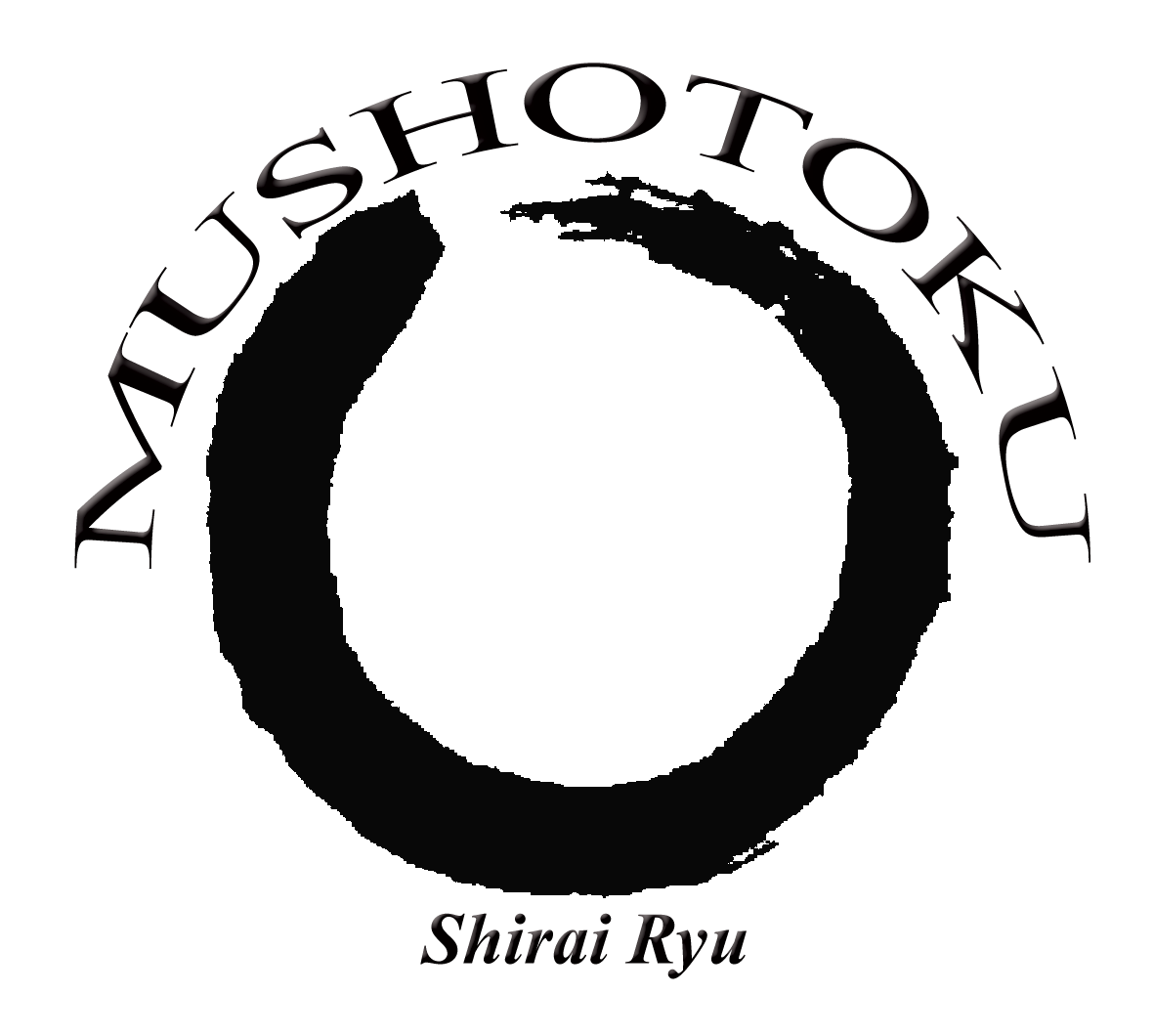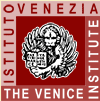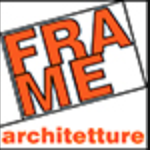Sostegno ATTIVO
Intervista al Maestro T. Kase - A TRACE OF THE PAST
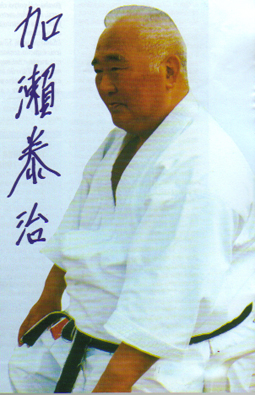 Back in the February 1944 I obtained a presentation letter from
Master Hironishi to go to the shoto dojo of Master Gichin Funakoshi.
I have been practicing for a week when Master Yoshitaka came
in front of me. Master Yoshitaka, also called Gikko, was the
third before last son of Master Gichin Funakoshi; in 1934 he
took place instead of Takeshi Shimoda, assistant of the already
died father.
Back in the February 1944 I obtained a presentation letter from
Master Hironishi to go to the shoto dojo of Master Gichin Funakoshi.
I have been practicing for a week when Master Yoshitaka came
in front of me. Master Yoshitaka, also called Gikko, was the
third before last son of Master Gichin Funakoshi; in 1934 he
took place instead of Takeshi Shimoda, assistant of the already
died father.
Master Yoshitaka without saying any word moved - in heisokudachi position (standing position) - first very slow a front maegeri, got his right knee close to the chest, keeping this hikiashi position and without touching the tatami, he extended his right leg on the right side to perform a yokogeri, then still his extended leg turned his body around to perform a mawashigeri (circular kick).
He got his right leg back to the ground (tatami) showing an astonishing muscle and mental control. Suddenly he did the same techniques with an unbelievable speed and kime.
What students saw was just a white flash of his karategi "exploding" in three different directions.
We did not feel his leg and body moving; I was two meters away from him and it was like being hit by a very strong wind, capable to move me away.
It was 57 years ago and that feeling is still alive in my mind and in my soul like it was yesterday.
That was the image and the technical level of the real karate-do, and that image still now, at the age to 73 years old, pushes me to get and to improve my technique, with more speed, with more kime.
Then, after this incredible performance, Master Yoshitaka smiled again, relaxed as nothing happened. Shocked and astonished I witnessed a beautiful and clean technique, supernatural somehow: the "Fourth Dimension". As later Master Yoshitaka tried to explain to us, karate is not only physical power or elegance, there is a mystery in it, something transcendent at a level of knowledge that each student tries to get, but only if he's willing to.
The Shoto Dojo was founded in 1937 thanks to Master Yoshitaka that obtained all funds from his father Gichin students. He left Okinawa in 1922 to fulfill his mission: to spread Karate in Japan. By the end of Second World War, in1945, the Shoto Dojo was destroyed by an air raid. At that time I was a Marine Officer and I had a special training to become a kamikaze. Six months later Master Yoshitaka died.
"At the end of the World War II (1946) at the Sensho University, very famous for its Economics Department, I practiced Karate with Master Hironishi from early morning (08.00) to the evening. Each Monday morning at the University dojo the master was Gichin Funakoshi, sometimes together with his older son.
I was incharged, as a real deshi (student), to assist Sensei Funakoshi from his house to the dojo and back, as he was old. As a good student I always said "Oss Sensei" and I was taking his keikogi wrapped in a shawl. He was speaking low and I was trying to understand what he was saying to me about the various aspects of karate.
Sensei Funakoshi was always very traditionally dressed with a black kimono, hakama, a black hat and high zori (sandals) as they used to be in the ancient times.
He said: "I do not wear very high zori to be taller but just to increase my sense of balance.
He was noticed for his formal attire, in a Japanese society that, just after the war, was trying to be very Americanized.
That was yesterday, and today?
I started to practice shotokan on that day of 1944, 58 years ago. After the Second World War I got into the Jka (Japan karate-do association) founded by Masatoshi Nakayama (1913-1993) in 1949, and I left to France, my second home country. The karate-do Jka was very different from the one I practiced with Yoshitaka. I asked to myself: I should train to get that explosion, figure, speed and kime that I always had in my mind since that day on 1944, when sensei Yoshitaka did that performance of geri, that we could see on his katas.
Finally I understood: I had to analyze and understand the history of karate. Gichin Funakoshi told us he had as elementary schoolmate master Azato's son.
At the age of thirteen Gichin Funakoshi was introduced to master Azato that accepts him as a student. Master Azato, coming from a noble family, had a samurai education, either cultural or practical of martial arts; he was working for the regal family at the Shuri castle, and he was one of the first noble gentlemen to cut the Chinese tuft off. Tall, wide shoulders, he was a perfect scholar and expert of karate and kendo.
He was a very demanding teacher and he was never satisfied of his students' results. Many years passed before Funakoshi was allowed to study a new kata.
Another teacher of Funakoshi, Azato's friend, was Yasutsune Itosu, an important official of the old Japanese government; he retired on 1885 and taught Katate to selected students at his house.
Itosu was a medium size man, average tall, huge chest, a very strong body with an extraordinary strength on his arms. Itosu could squeeze a thick bamboo stick with only one hand. Under Itosu's guidance, Funakoshi kept studying the karate's knowledge. Just because of his body structure, master Itosu applied small but very efficient and powerful techniques. Once master Taiji Kase asked to himself: how Kenwa Mabuni, founder of shito ruy and master Gichin Funakoshi, both students of master Itosu, had such a different karate style? As we know, the shito ryu positions are shorter than karate's ones. Then I understood, the difference was because the real master of Funakoshi was master Azato.
Azato was a noble samurai expert in kendo, he was coming from the Jigen ryu school passed to Okinawa from the Satsuma clan, exiled on the island due to the defeat with the Tokugawa clan. The jigen ryu applied very wide, powerful, fast and efficient techniques, as master Kase always says: o waza. Also, master Kase said - Azato was a student of Master Sokon Matsumura, the military reference for the regal family in Shuri, he was skilled in jigen ryu as well. An example: Master Sokon Matusmura's kata Sochin was very wide, different from the one passed on by master Itosu. In the city of Okinawa the kata was called Sochin Matsumura. The technique of Gichin Funakoshi, even though he has been a student of master Anko Itosu, is historically remembered in the tradition that starts from Sokon Matsumura, Azato, Gichin Funakoshi and his son Yoshitaka, nowadays continued by master Taiji Kase.
When Master Gichin Funakoshi moved from Shuri, Okinawa in Japan, he got a big success, making all martial art experts interested in his knowledge, including Jigoro Kano. Gichin Funakoshi had the chance to get in touch with the Japanese budo. He then realized the high level they reached, especially with the art of the sword; he also understood that art of karate must improve to the art of sword's level; his son Yoshitaka has been very important to reach that level.
Yoshitaka made that revolutionary change including the research of the "fourth dimension"; thanks to it a kendo expert could get an enormous concentration that could cut a war helmet with just one katana's stroke (a demonstration done in front of the Emperor of Japan).
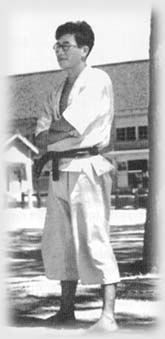 Master Kase says:Okuyama,
assistant of Master Yoshitaka Funakoshi, influenced very much
my karate.
Master Kase says:Okuyama,
assistant of Master Yoshitaka Funakoshi, influenced very much
my karate.
When I was training with sensei Yoshitaka I thought the "o waza" was the goal to develop the speed, explosion and kime.Today I am convinced that if master Yoshitaka were still alive he would have continued his revolutionary research going much further.
For me "o waza" is just the beginning, part of a path that must include everything. Between wide technique (o waza) and small technique (ko waza) from the energy point of view there must be no difference. "O waza" prepares the "ko waza", which fits much better the fight; be careful: I believe to start studying seriously these concepts, this my karate (Karate Shotokan Kase Ha), it is necessary a work of 20-30 years of traditional shotokan, at least; it is very difficult to develop the necessary energy to express those levels.
As an example: when sensei Yoshitaka was showing his tsuki had his hand opened to the useful distance for the ko waza, but then you were hit very strongly, anyway. He was not pushing his fist as others did, he was just penetrating.
He was able to change the ko in o; this image remains on my mind for the rest or my life. I did not understand either at that time. Today, 55 years later I realize that this the "way" to get something more, to go further. It is possible to get this high level but it is necessary to think and practice the "way" of karate-do as budo, not as a sport.
Master Gichin Funakoshi and his son Yoshitaka gave this direction, particularly Yoshitaka and his closer assistants spoke about "fourth dimension" and about "ki", energy, 2-3 principles, but very clear.
The interview, interview, lesson of history, as you want to call it finishes here it.
A cura di Luciano Puricelli
i testi sono (c) dell'autore tutti i diritti riservati
Impaginazione&Grafica a cura di Davide Rizzo
Le immagini sono tratte dai vari siti presenti nella Rete
 IN ITALIAN LANGUAGE
IN ITALIAN LANGUAGE
Traduzione a cura di Roberto Boem
i testi sono (c) dell'autore tutti i diritti riservati
Impaginazione&Grafica a cura di Davide Rizzo
Le immagini sono tratte dai vari siti presenti nella Rete
 Back in the February 1944 I obtained a presentation letter from
Master Hironishi to go to the shoto dojo of Master Gichin Funakoshi.
I have been practicing for a week when Master Yoshitaka came
in front of me. Master Yoshitaka, also called Gikko, was the
third before last son of Master Gichin Funakoshi; in 1934 he
took place instead of Takeshi Shimoda, assistant of the already
died father.
Back in the February 1944 I obtained a presentation letter from
Master Hironishi to go to the shoto dojo of Master Gichin Funakoshi.
I have been practicing for a week when Master Yoshitaka came
in front of me. Master Yoshitaka, also called Gikko, was the
third before last son of Master Gichin Funakoshi; in 1934 he
took place instead of Takeshi Shimoda, assistant of the already
died father.Master Yoshitaka without saying any word moved - in heisokudachi position (standing position) - first very slow a front maegeri, got his right knee close to the chest, keeping this hikiashi position and without touching the tatami, he extended his right leg on the right side to perform a yokogeri, then still his extended leg turned his body around to perform a mawashigeri (circular kick).
He got his right leg back to the ground (tatami) showing an astonishing muscle and mental control. Suddenly he did the same techniques with an unbelievable speed and kime.
What students saw was just a white flash of his karategi "exploding" in three different directions.
We did not feel his leg and body moving; I was two meters away from him and it was like being hit by a very strong wind, capable to move me away.
It was 57 years ago and that feeling is still alive in my mind and in my soul like it was yesterday.
That was the image and the technical level of the real karate-do, and that image still now, at the age to 73 years old, pushes me to get and to improve my technique, with more speed, with more kime.
Then, after this incredible performance, Master Yoshitaka smiled again, relaxed as nothing happened. Shocked and astonished I witnessed a beautiful and clean technique, supernatural somehow: the "Fourth Dimension". As later Master Yoshitaka tried to explain to us, karate is not only physical power or elegance, there is a mystery in it, something transcendent at a level of knowledge that each student tries to get, but only if he's willing to.
The Shoto Dojo was founded in 1937 thanks to Master Yoshitaka that obtained all funds from his father Gichin students. He left Okinawa in 1922 to fulfill his mission: to spread Karate in Japan. By the end of Second World War, in1945, the Shoto Dojo was destroyed by an air raid. At that time I was a Marine Officer and I had a special training to become a kamikaze. Six months later Master Yoshitaka died.
"At the end of the World War II (1946) at the Sensho University, very famous for its Economics Department, I practiced Karate with Master Hironishi from early morning (08.00) to the evening. Each Monday morning at the University dojo the master was Gichin Funakoshi, sometimes together with his older son.
I was incharged, as a real deshi (student), to assist Sensei Funakoshi from his house to the dojo and back, as he was old. As a good student I always said "Oss Sensei" and I was taking his keikogi wrapped in a shawl. He was speaking low and I was trying to understand what he was saying to me about the various aspects of karate.
Sensei Funakoshi was always very traditionally dressed with a black kimono, hakama, a black hat and high zori (sandals) as they used to be in the ancient times.
He said: "I do not wear very high zori to be taller but just to increase my sense of balance.
He was noticed for his formal attire, in a Japanese society that, just after the war, was trying to be very Americanized.
That was yesterday, and today?
I started to practice shotokan on that day of 1944, 58 years ago. After the Second World War I got into the Jka (Japan karate-do association) founded by Masatoshi Nakayama (1913-1993) in 1949, and I left to France, my second home country. The karate-do Jka was very different from the one I practiced with Yoshitaka. I asked to myself: I should train to get that explosion, figure, speed and kime that I always had in my mind since that day on 1944, when sensei Yoshitaka did that performance of geri, that we could see on his katas.
Finally I understood: I had to analyze and understand the history of karate. Gichin Funakoshi told us he had as elementary schoolmate master Azato's son.
At the age of thirteen Gichin Funakoshi was introduced to master Azato that accepts him as a student. Master Azato, coming from a noble family, had a samurai education, either cultural or practical of martial arts; he was working for the regal family at the Shuri castle, and he was one of the first noble gentlemen to cut the Chinese tuft off. Tall, wide shoulders, he was a perfect scholar and expert of karate and kendo.
He was a very demanding teacher and he was never satisfied of his students' results. Many years passed before Funakoshi was allowed to study a new kata.
Another teacher of Funakoshi, Azato's friend, was Yasutsune Itosu, an important official of the old Japanese government; he retired on 1885 and taught Katate to selected students at his house.
Itosu was a medium size man, average tall, huge chest, a very strong body with an extraordinary strength on his arms. Itosu could squeeze a thick bamboo stick with only one hand. Under Itosu's guidance, Funakoshi kept studying the karate's knowledge. Just because of his body structure, master Itosu applied small but very efficient and powerful techniques. Once master Taiji Kase asked to himself: how Kenwa Mabuni, founder of shito ruy and master Gichin Funakoshi, both students of master Itosu, had such a different karate style? As we know, the shito ryu positions are shorter than karate's ones. Then I understood, the difference was because the real master of Funakoshi was master Azato.
Azato was a noble samurai expert in kendo, he was coming from the Jigen ryu school passed to Okinawa from the Satsuma clan, exiled on the island due to the defeat with the Tokugawa clan. The jigen ryu applied very wide, powerful, fast and efficient techniques, as master Kase always says: o waza. Also, master Kase said - Azato was a student of Master Sokon Matsumura, the military reference for the regal family in Shuri, he was skilled in jigen ryu as well. An example: Master Sokon Matusmura's kata Sochin was very wide, different from the one passed on by master Itosu. In the city of Okinawa the kata was called Sochin Matsumura. The technique of Gichin Funakoshi, even though he has been a student of master Anko Itosu, is historically remembered in the tradition that starts from Sokon Matsumura, Azato, Gichin Funakoshi and his son Yoshitaka, nowadays continued by master Taiji Kase.
When Master Gichin Funakoshi moved from Shuri, Okinawa in Japan, he got a big success, making all martial art experts interested in his knowledge, including Jigoro Kano. Gichin Funakoshi had the chance to get in touch with the Japanese budo. He then realized the high level they reached, especially with the art of the sword; he also understood that art of karate must improve to the art of sword's level; his son Yoshitaka has been very important to reach that level.
Yoshitaka made that revolutionary change including the research of the "fourth dimension"; thanks to it a kendo expert could get an enormous concentration that could cut a war helmet with just one katana's stroke (a demonstration done in front of the Emperor of Japan).
 Master Kase says:Okuyama,
assistant of Master Yoshitaka Funakoshi, influenced very much
my karate.
Master Kase says:Okuyama,
assistant of Master Yoshitaka Funakoshi, influenced very much
my karate.When I was training with sensei Yoshitaka I thought the "o waza" was the goal to develop the speed, explosion and kime.Today I am convinced that if master Yoshitaka were still alive he would have continued his revolutionary research going much further.
For me "o waza" is just the beginning, part of a path that must include everything. Between wide technique (o waza) and small technique (ko waza) from the energy point of view there must be no difference. "O waza" prepares the "ko waza", which fits much better the fight; be careful: I believe to start studying seriously these concepts, this my karate (Karate Shotokan Kase Ha), it is necessary a work of 20-30 years of traditional shotokan, at least; it is very difficult to develop the necessary energy to express those levels.
As an example: when sensei Yoshitaka was showing his tsuki had his hand opened to the useful distance for the ko waza, but then you were hit very strongly, anyway. He was not pushing his fist as others did, he was just penetrating.
He was able to change the ko in o; this image remains on my mind for the rest or my life. I did not understand either at that time. Today, 55 years later I realize that this the "way" to get something more, to go further. It is possible to get this high level but it is necessary to think and practice the "way" of karate-do as budo, not as a sport.
Master Gichin Funakoshi and his son Yoshitaka gave this direction, particularly Yoshitaka and his closer assistants spoke about "fourth dimension" and about "ki", energy, 2-3 principles, but very clear.
The interview, interview, lesson of history, as you want to call it finishes here it.
